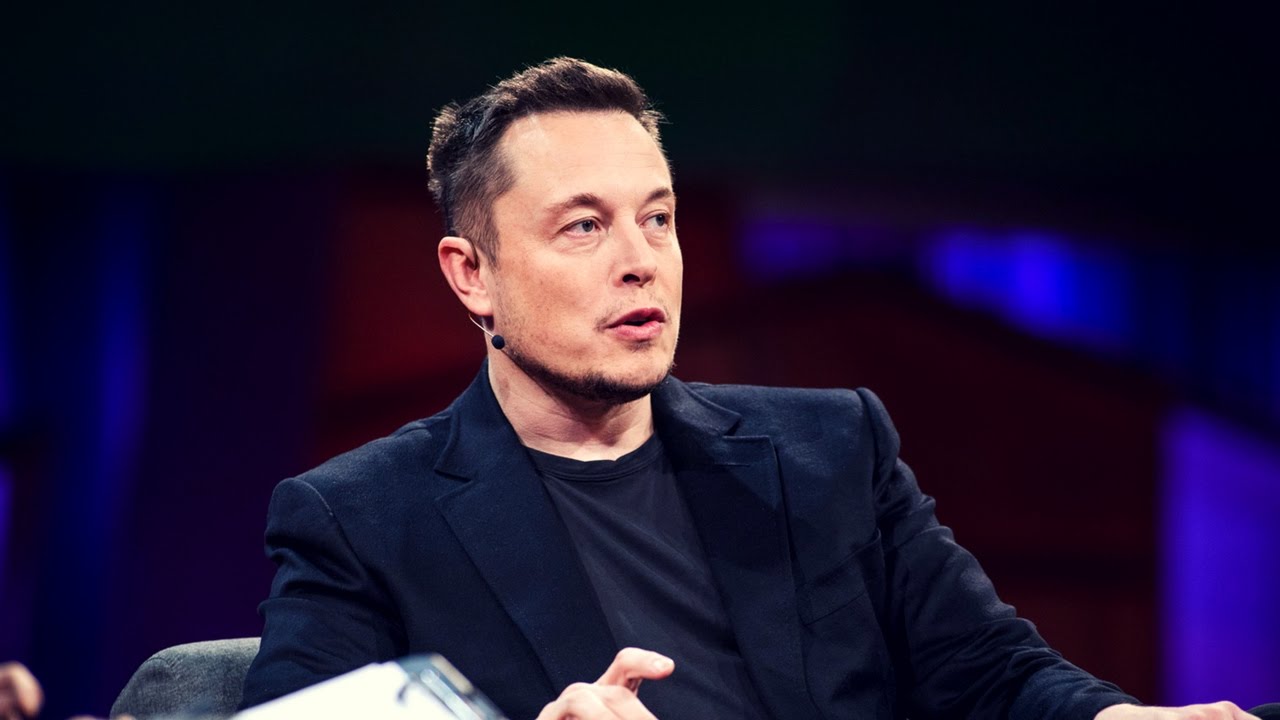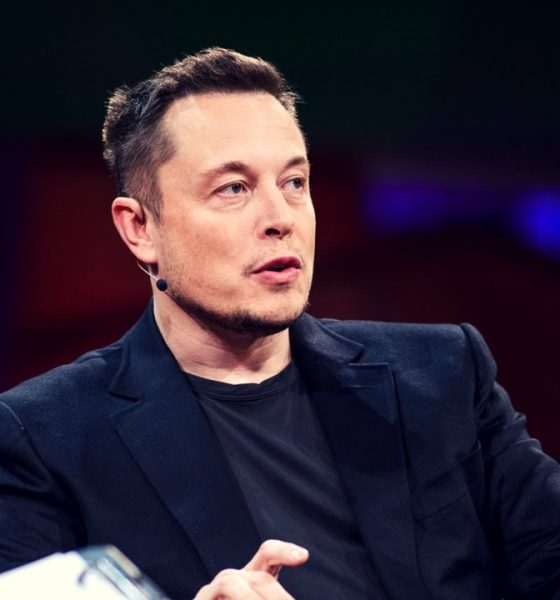

Investor's Corner
Here’s what Tesla owner-investors will be asking Elon Musk today
During Tesla’s upcoming Q4 and Full Year 2018 earnings call this Wednesday at 2:30 p.m. PT (5:30 p.m. ET), the electric car maker would be taking questions from retail investors that are aggregated from Say, a startup that creates and develops investor communication tools.
Over the past weeks, Tesla’s retail investors have submitted and voted on questions that they wish to be discussed in the company’s upcoming earnings call. After collecting the shareholder inquiries on its website, Say would be delivering them to Tesla’s investor relations department. In a statement to Bloomberg Law, a Tesla spokesperson has confirmed that the company would indeed be answering some questions from retail investors.
The Say campaign appears to be quite popular among shareholders. So far, over 250 inquiries have been posted by investors representing more than $50 million worth of TSLA shares. Among the most popular questions for the company involve Tesla’s customer service issues, Model 3’s annual targets, and a possible 2170 battery update for the Model S and X. The inquiries are vetted as well, since Say only allows verified Tesla shareholders to vote and submit questions.
Here’s the Top 5 questions from Say’s Tesla Q4 earnings page.
- Owners, many of them with large followings online, are becoming very vocal about Tesla’s worsening customer service experience with delivery, service, and repair. This has a severe impact on sales and returning sales. What are you doing to change this growing negative reputation?
- How are feeling about demand right now across the product line? Is 500k-700k units at ~$42k ASP still a realistic annual target for Model 3, even considering the impact of Model Y on demand? Do you continue to see S/X ~100k annually?
- If and when will Tesla switch Model S & X to 2170 battery cells? What percent range improvement do you expect?
- Can you please share an update on Full Self Driving and Tesla Network development? When will customers start to see FSD features? What’s a best case timeline for the Tesla Network to go live?
- Where will the Tesla Semi & Model Y be produced? Can you share a timeline on the expected production ramp of these vehicles?
This would not be the first time for Tesla to take a question from a retail investor. Last May, Elon Musk courted Wall Street’s ire after he dismissed a couple of analysts, dubbing their inquiries as “boring” and “boneheaded.” Instead, Musk opted to take questions from retail investor Galileo Russell, a retail investor who hosts a YouTube channel called HyperChange TV. Rusell’s inquiries, which were also compiled from the Tesla community, were appreciated by Musk, who proceeded to give a notable amount of updates on the company’s upcoming projects. Ultimately, Galileo and Say would end up working together in the development of the question platform that would be used in Tesla’s earnings call later today.
In a statement to Teslarati, Galileo shared some questions that he hopes Tesla would address in its Q4 and Full Year 2018 earnings call.
“I’m so happy Tesla has chosen to take retail questions from SAY. The top questions surrounding Tesla’s worsening Net Promoter Scores & customer service pinpoint exactly what I want to know. What is Tesla doing to address its biggest weakness? Additionally, Rob’s question from Tesla Daily (currently #2) about Model 3 demand at maturity, will give us clarity on normalized demand for the car now that it has been available for more than a year.”
Ultimately, Tesla appears to be set on democratizing its process of communicating its earnings to shareholders, the media, as well as institutional investors. This is yet another step away from convention, considering that earnings calls usually feature inquiries from Wall Street analysts and the occasional member of the media. By supporting Say’s campaign, electric car maker is all but ensuring that its retail investors would be able to ask inquiries that are relevant and pertinent to the Tesla community as a whole.
if any, Tesla’s support for the retail investors’ questions would most definitely make today’s earnings call the last thing from “boring.”
Tesla is set to release its Q4 and Full Year 2018 financial results after markets close today. Following the release of its Q4 and full-year 2018 financial results, Tesla will be holding its earnings call, which will begin at 2:30 p.m. Pacific Time (5:30 p.m. Eastern Time).
The full list of questions submitted by TSLA retail investors in Say’s platform could be accessed here.

Investor's Corner
Tesla stock closes at all-time high on heels of Robotaxi progress

Tesla stock (NASDAQ: TSLA) closed at an all-time high on Tuesday, jumping over 3 percent during the day and finishing at $489.88.
The price beats the previous record close, which was $479.86.
Shares have had a crazy year, dipping more than 40 percent from the start of the year. The stock then started to recover once again around late April, when its price started to climb back up from the low $200 level.
This week, Tesla started to climb toward its highest levels ever, as it was revealed on Sunday that the company was testing driverless Robotaxis in Austin. The spike in value pushed the company’s valuation to $1.63 trillion.
Tesla Robotaxi goes driverless as Musk confirms Safety Monitor removal testing
It is the seventh-most valuable company on the market currently, trailing Nvidia, Apple, Alphabet (Google), Microsoft, Amazon, and Meta.
Shares closed up $14.57 today, up over 3 percent.
The stock has gone through a lot this year, as previously mentioned. Shares tumbled in Q1 due to CEO Elon Musk’s involvement with the Department of Government Efficiency (DOGE), which pulled his attention away from his companies and left a major overhang on their valuations.
However, things started to rebound halfway through the year, and as the government started to phase out the $7,500 tax credit, demand spiked as consumers tried to take advantage of it.
Q3 deliveries were the highest in company history, and Tesla responded to the loss of the tax credit with the launch of the Model 3 and Model Y Standard.
Additionally, analysts have announced high expectations this week for the company on Wall Street as Robotaxi continues to be the focus. With autonomy within Tesla’s sights, things are moving in the direction of Robotaxi being a major catalyst for growth on the Street in the coming year.
Elon Musk
Tesla needs to come through on this one Robotaxi metric, analyst says
“We think the key focus from here will be how fast Tesla can scale driverless operations (including if Tesla’s approach to software/hardware allows it to scale significantly faster than competitors, as the company has argued), and on profitability.”

Tesla needs to come through on this one Robotaxi metric, Mark Delaney of Goldman Sachs says.
Tesla is in the process of rolling out its Robotaxi platform to areas outside of Austin and the California Bay Area. It has plans to launch in five additional cities, including Houston, Dallas, Miami, Las Vegas, and Phoenix.
However, the company’s expansion is not what the focus needs to be, according to Delaney. It’s the speed of deployment.
The analyst said:
“We think the key focus from here will be how fast Tesla can scale driverless operations (including if Tesla’s approach to software/hardware allows it to scale significantly faster than competitors, as the company has argued), and on profitability.”
Profitability will come as the Robotaxi fleet expands. Making that money will be dependent on when Tesla can initiate rides in more areas, giving more customers access to the program.
There are some additional things that the company needs to make happen ahead of the major Robotaxi expansion, one of those things is launching driverless rides in Austin, the first city in which it launched the program.
This week, Tesla started testing driverless Robotaxi rides in Austin, as two different Model Y units were spotted with no occupants, a huge step in the company’s plans for the ride-sharing platform.
Tesla Robotaxi goes driverless as Musk confirms Safety Monitor removal testing
CEO Elon Musk has been hoping to remove Safety Monitors from Robotaxis in Austin for several months, first mentioning the plan to have them out by the end of 2025 in September. He confirmed on Sunday that Tesla had officially removed vehicle occupants and started testing truly unsupervised rides.
Although Safety Monitors in Austin have been sitting in the passenger’s seat, they have still had the ability to override things in case of an emergency. After all, the ultimate goal was safety and avoiding any accidents or injuries.
Goldman Sachs reiterated its ‘Neutral’ rating and its $400 price target. Delaney said, “Tesla is making progress with its autonomous technology,” and recent developments make it evident that this is true.
Investor's Corner
Tesla gets bold Robotaxi prediction from Wall Street firm
Last week, Andrew Percoco took over Tesla analysis for Morgan Stanley from Adam Jonas, who covered the stock for years. Percoco seems to be less optimistic and bullish on Tesla shares, while still being fair and balanced in his analysis.

Tesla (NASDAQ: TSLA) received a bold Robotaxi prediction from Morgan Stanley, which anticipates a dramatic increase in the size of the company’s autonomous ride-hailing suite in the coming years.
Last week, Andrew Percoco took over Tesla analysis for Morgan Stanley from Adam Jonas, who covered the stock for years. Percoco seems to be less optimistic and bullish on Tesla shares, while still being fair and balanced in his analysis.
Percoco dug into the Robotaxi fleet and its expansion in the coming years in his latest note, released on Tuesday. The firm expects Tesla to increase the Robotaxi fleet size to 1,000 vehicles in 2026. However, that’s small-scale compared to what they expect from Tesla in a decade.
Tesla expands Robotaxi app access once again, this time on a global scale
By 2035, Morgan Stanley believes there will be one million Robotaxis on the road across multiple cities, a major jump and a considerable fleet size. We assume this means the fleet of vehicles Tesla will operate internally, and not including passenger-owned vehicles that could be added through software updates.
He also listed three specific catalysts that investors should pay attention to, as these will represent the company being on track to achieve its Robotaxi dreams:
- Opening Robotaxi to the public without a Safety Monitor. Timing is unclear, but it appears that Tesla is getting closer by the day.
- Improvement in safety metrics without the Safety Monitor. Tesla’s ability to improve its safety metrics as it scales miles driven without the Safety Monitor is imperative as it looks to scale in new states and cities in 2026.
- Cybercab start of production, targeted for April 2026. Tesla’s Cybercab is a purpose-built vehicle (no steering wheel or pedals, only two seats) that is expected to be produced through its state-of-the-art unboxed manufacturing process, offering further cost reductions and thus accelerating adoption over time.
Robotaxi stands to be one of Tesla’s most significant revenue contributors, especially as the company plans to continue expanding its ride-hailing service across the world in the coming years.
Its current deployment strategy is controlled and conservative to avoid any drastic and potentially program-ruining incidents.
So far, the program, which is active in Austin and the California Bay Area, has been widely successful.








